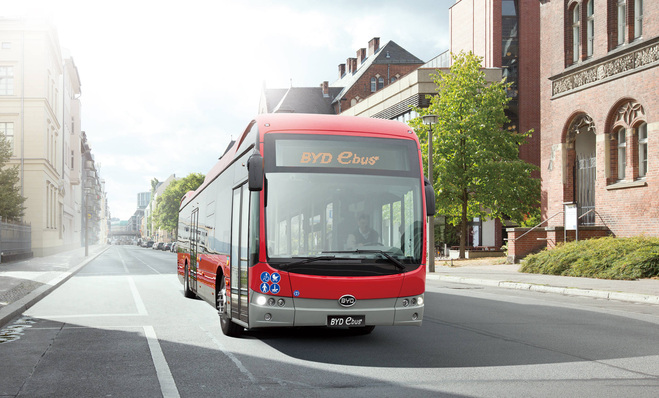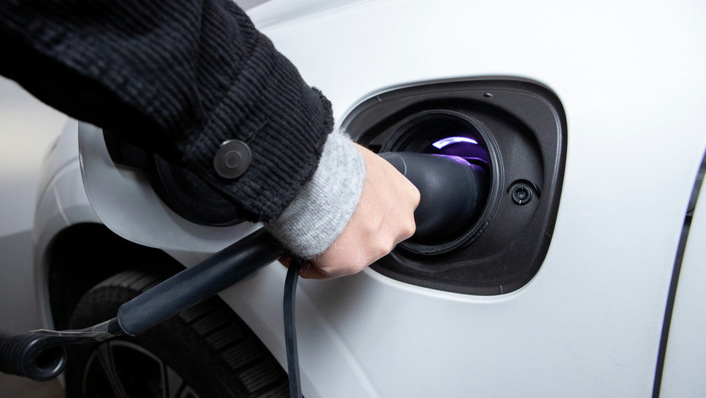Sweden's first fleet of electric trucks will roll out in October. The 42-tonne heavy goods trucks will cover an average of 200 kilometres per day transporting Oatly’s goods from production sites in southern Sweden. Behind the setup is Einride's Freight Mobility Platform. The partnership will allow Oatly to lower its climate footprint on the affected routes by 87%, totalling an average reduction of 107.5 tonnes of carbon dioxide per year per truck, a decrease of over 2,100 tonnes of CO2 in total throughout the duration of the contract versus diesel trucks.
“Switching to electric trucks has a decisive effect on our environmental impact. We are planning for and want to act as a model for the larger global conversion to electric transport,” says Simon Broadbent, Supply Chain Director at Oatly.
Transport no longer a bulk commodity
Electric motors have been around for nearly 200 years; since 1821 to be exact. The fact that electric vehicles have become commonplace nowadays is due to exponential leaps in battery technology and other innovations needed to be optimized for maximum impact, many of which have only emerged in recent years.
“The technology is now fully mature to be able to coordinate a whole system of transport in real time. We can handle different kinds of vehicles, fuel, and routes simultaneously. Transport is no longer a bulk commodity but a business issue. For the next 2-3 years, we will create an industrial standard for climate- and business-smart transport systems,” says Robert Falck, CEO and Founder of Einride.
A first step towards widespread electrification
Oatly has long been working to reduce its carbon dioxide emissions as much as possible. With electric trucks, it can now also cut emissions from transport. At the same time, the electric trucks are optimized for more computer-controlled logistics.
“Electric transport is a key part of our global strategy for sustainable logistics. Implementing electric trucks in our supply chain will come at an extra cost in the first few years, but it is an investment to significantly reduce emissions and increase efficiency in the long run,” says Simon Broadbent.
From October, 9 out of 10 transports to Oatly's warehouse in Helsingborg will be powered by electricity. On the same routes, Oatly's remaining diesel trucks will also be coordinated with the Einride Freight Mobility Platform, improving both time and fuel efficiency.
“The shift to electrical operation takes place in stages, where we coordinate old manual and new digital technology through both technology platforms and software. It affects production, inventory, and the entire business. Therefore, it is natural that the first electric truck fleet is born in close cooperation between a forward-thinking consumer company and a cutting-edge tech company,” said Falck.
After electrification comes automation
Together with Einride, Oatly now becomes one of the world's first companies to electrify a fleet of heavy trucks. At the same time, the two companies are in dialogue about using electric trucks in other markets as well. Further ahead, the next steps are remote-operated electric trucks and self-driving electric vehicles such as Einride’s ground-breaking Pod.
“Remote operation is a natural step to further improve efficiency. Before that, Oatly will electrify more transportation around the world. We also hope to make an impression on our various partners and encourage them to switch to electricity. We are leading the development today, and plan to continue to lead it,” said Broadbent.
See also this article:
Vehicle-integrated PV for electrical commercial vehicles
Oatly's electric trucks are also the first in Europe with heavy transport, despite the myth that electric trucks cannot carry heavy loads. The solution is in Einride’s Freight Mobility Platform software.
“By planning transport more accurately, we can drive 24 tonnes of goods an average of 120 kilometres without charging. It is about software optimizing and coordinating drivers, vehicles, routes, charging etc. For example, in each Oatly shift we drive with three drivers in a total of four different trucks, a new way of thinking in the transport world. This is meant to always have a truck on charge, which places less strain on the batteries and is therefore more durable and economical,” says Jonas Hernlund, CCO of Einride. (mfo)







